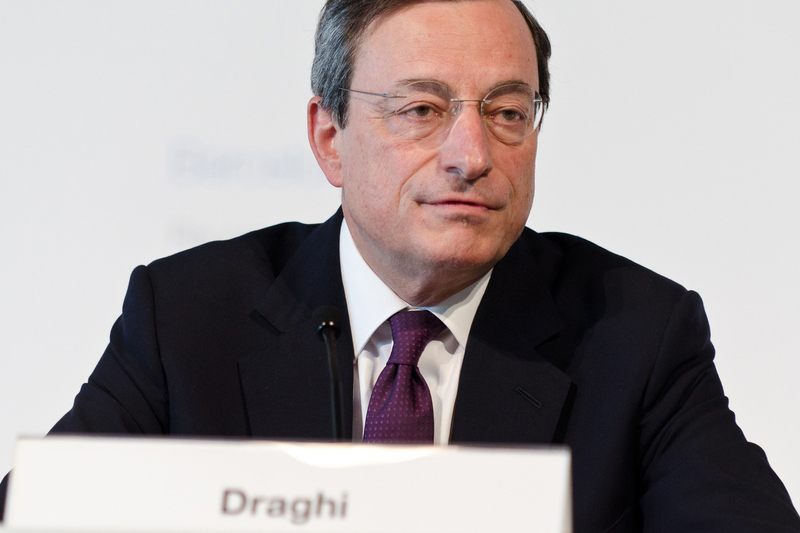Investing.com - The euro weakened to two-year lows against the dollar on Thursday after European Central Bank President Mario Draghi said monetary authorities may stimulate the economy further if needed.
In U.S. trading, EUR/USD was down 0.58% at 1.2411, up from a session low of 1.2398 and off a high of 1.2533.
The pair was likely to find support at 1.2293, the low from Aug. 20, 2012, and resistance at 1.2578, Tuesday's high.
Draghi said earlier that the ECB would soon begin purchasing asset-backed securities to prop up the economy.
The program will run for two years and have a “sizeable impact” on the ECB’s balance sheet, Draghi said.
He added that the governing council is unanimously committed to taking further “timely measures” if needed, which sent the euro dropping.
The ECB’s current stimulus program includes purchases of asset-backed securities and covered bonds, though markets are keeping a close eye out for plans to announce purchases of government debt, known as quantitative easing.
The ECB left rates on hold at record lows at its policy meeting earlier Thursday, as widely expected.
Meanwhile across the Atlantic, the dollar found support after the number of people who filed for unemployment assistance in the U.S. last week fell more than expected, fueling optimism over the strength of the labor market, official data showed on Thursday.
The U.S. Department of Labor reported earlier that the number of individuals filing for initial jobless benefits in the week ending Nov. 1 decreased by 10,000 to 278,000 from the previous week’s revised total of 288,000.
Analysts had expected jobless claims to fall by 3,000 to 285,000 last week.
The number of Americans applying for new jobless benefits held below 300,000 for the eighth consecutive week, a sign that recovery in the labor market may be gaining momentum.
Continuing jobless claims in the week ended Oct. 25 fell to 2.348 million from 2.387 million in the preceding week. Analysts had expected continuing claims to decline to 2.360 million.
The four-week moving average came to 279,000, a decline of 2,250 from the previous week’s total of 281,250. The monthly average is seen as a more accurate gauge of labor trends because it reduces volatility in the week-to-week data.
Elsewhere, the euro was up against the pound, with EUR/GBP up 0.17% at 0.7827, and down against the yen, with EUR/JPY down 0.40% at 142.58.
On Friday, expect the pair to move on the U.S. October jobs report.
